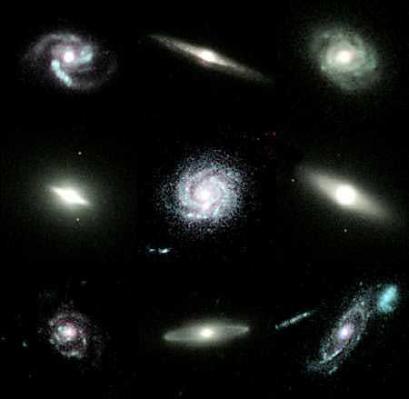The newest camera on the Hubble Space Telescope has created an unprecedented image of a huge patch of sky, which includes about 10,000 galaxies. This image may help understand how our own galaxy, the Milky Way, evolved, astronomers said Thursday.

The new galaxy mosaic is the largest color image ever taken by a telescope in orbit around Earth. The image covers an area of the sky roughly the size of a full moon. It may not sound like much, but it is one hundred and fifty times the size of a previous image, made in a previous mapping of galaxies, which is known as the "Hubble Deep Field Image".
In this case, size is very important, because pictures of a narrow area, however deep they may be, may give a false impression of what is happening there in outer space.
"Galaxies are very diverse creatures," said Sharadha Jogi, an astronomer at the Space Telescope Science Institute in Baltimore, at a press briefing. "You really need a large sample, otherwise your results don't reflect reality."
The new image, taken with Hubble's advanced mapping camera, is a patchwork of 63 squares, showing the area around the constellation Fornax in the southern hemisphere.
The high-resolution look gave scientists the images of about 10,000 galaxies. The scientists also estimate that there are tens of thousands more but paler galaxies in the same area.
The study, conducted by an international team of scientists and presented at the meeting of the American Astronomical Society in Atlanta, aims to investigate the way galaxies are formed. This is of utmost importance to researchers of the Milky Way galaxy, in which Earth is located, Jogi said.
Because Earth observers are inside the Milky Way galaxy, they see other galaxies better.
The international team chose to build the image of the region around the Fornax constellation, as they had long known the distance to the 10,000 galaxies.
Knowing the distance allowed astronomers to know how long it took light to reach Hubble's camera from the galaxy itself, allowing them to see the galaxies as they were when the universe was about 4.5 billion years old. The age of the universe today is 13.7 billion years.
Jogi pointed out that most of the galaxies in the universe today, about seventy percent of them, are closed spiral galaxies similar to the Milky Way. These are spiral-shaped galaxies with elongated arms of stars, which push gas into the center of the galaxy, where the gas fuels wild explosions in which stars are formed.
There are also open spiral galaxies and elliptical galaxies, which look smooth and round. The image also captured galactic mergers, in which stars experience what astronomers call "violent relaxation" - a kind of stellar amnesia, in which stars "forget" where they were in the galaxy before the merger.
"By piecing these different images together, we were able to piece together this huge puzzle of galaxy evolution," Jogi said.
The mapping of the galaxies is known as "GEMS", short for Galaxy Evolution from Morphology and Spectral energy distributions.
